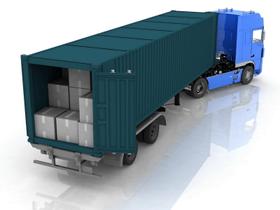On March 27, President Trump signed into law the Coronavirus Aid, Relief, and Economic Stimulus Act of 2020 (the "CARES Act"). What is the Act's purpose and who does it benefit? According to The National Law Review,
"Title I of the CARES Act establishes, among other things, the Paycheck Protection Program (the "Paycheck Program") providing for up to $349,000,000,000 in forgivable loans to business concerns which are backed by the United States Small Business Administration (the "SBA"). The Paycheck Program is a short-term program for the "Covered Period" from February 15, 2020, until June 30, 2020, and loans are capped at the lesser of 2.5x a borrower’s LTM average monthly payroll or $10,000,000 per borrower."
Shortly after that, we began to hear stories about businesses that received loans and didn't appear on the surface as the kind of company that should receive a loan. According to the Washington-Post, " Some large hotel and restaurant chains received loans meant for Main Street businesses, prompting calls for changes." So did several private K-12 schools, according to the Los Angeles Times. The reason why the media criticizes private schools for accepting CARES loans seems to be the optics. As UCLA education professor Tyrone Howard said, “That’s not a good look... There’s just something that’s not equitable about that.” Apparently, the private schools are being criticized because they have endowments. The popular thinking seems to be that if these private schools have money, they do not need CARES loans. However, perception is not the same as reality. With that in mind, let's look at how the typical private school endowment works.
How private school endowments work?
Private school endowments work the same as any endowment works. Think of an endowment as a savings account. Generous donors make substantial gifts to the school, often with a specific purpose in mind. For example, a grateful alumnus gives $100,000 for the financial aid pool. He wants to help the school reach its goal of attracting a diverse student population that cannot afford a private school education. The donor's principal will be invested together with all the other gifts that the school has received over the years. Generally, the school's board of trustees will insist on a conservative investment strategy. Only the investment income, not the principal, can be used for the purposes designated by the donors. So, let's assume that the return on the endowment funds was 10%. The would provide up to $10,000 for that donor's gift to the financial aid pool. Being cautious and conservative, private school boards of trustees rarely invade endowment principal. They would prefer to keep the principal intact for a legitimate emergency. Indeed, many contributions to endowment funds have specific restrictions on their use. In the example that I gave before, that $10,000 income cannot be used for resurfacing the basketball court or any other purpose except for financial aid. Albert Phung offers a clear explanation of how endowments work in How do university endowments work?
This video offers an overview of how endowments work.
Why do schools need endowments?
Honestly, I think endowments offer an easy target to generate feelings of jealousy among uninformed listeners and readers. That seems to be why the media runs stories about rich private schools and universities. In my opinion, that's a very superficial way of looking at an institution that seeks to protect its future by saving money. Private schools can be very fragile financially. Their operating income comes mainly from tuition and fees. Most of the time, this revenue stream does not cover all the expenses a school has. Besides the usual everyday expenses of salaries, utilities, insurance, etc., most private schools have many other expenses for which there is no specific revenue stream. For instance, they offer financial aid to students who need help with affording a private school education. Another example of an expense not normally found in a school's operating budget is refinishing a squash court floor or replacing a school bus. The list of expenses not in the operating budget is endless. This is where the income from endowments comes in. It funds a variety of activities according to the restrictions in the original donation.
This video offers another take on endowments and how they work.
Where do endowments come from?
As noted above, generous graduates are the principal source of endowment funds. When a school was established in 1906 like Kent School was, it's no wonder that its endowment is more than $130 million as of December 31, 2019. Thousands of students have graduated since its founding. Many of them have given very generous gifts to the school. As noted above, these gifts are added to the endowment fund which is invested conservatively. The income which the endowment fund throws off is allocated to various expense categories according to the instructions of the donors.
Questions? Contact us on Facebook. @privateschoolreview















